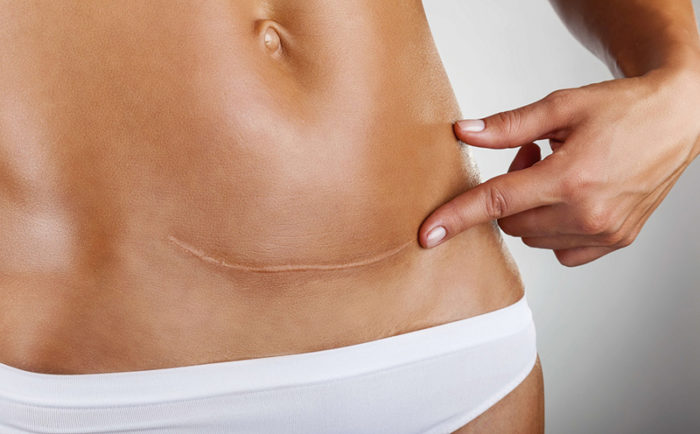A cesarean section is a surgical procedure performed in deliveries that pose a risk to the mother or child. In France, 1 in 5 births is by cesarean section. Is this procedure dangerous? Under what conditions is it performed? We provide some answers in this article.

What are the reasons for a cesarean section?
There are several reasons why a cesarean section is necessary. Some of these reasons come from the baby and others from the mother. Depending on the reasons, the cesarean section can be either scheduled (never before the 38th and a half week of pregnancy for the fetus’s lung maturity) or emergency . In the latter case, labor has already begun and the cesarean section is necessary to preserve the life and health of the mother and/or child. An operation lasts on average half an hour .
Causes related to the baby
- The baby is too fragile to be born vaginally (premature: breathing difficulty),
- The baby is poorly positioned in the womb (breech, head up, etc.),
- This is a multiple pregnancy (usually three or more).
Causes related to the mother
- The mother’s pelvis is too narrow,
- The mother’s health is not conducive to childbirth (illness, vaginal herpes),
- The mother’s placenta has detached
In these cases, the cesarean section can be planned a few weeks in advance .
However, certain symptoms may be discovered on the day , such as the baby’s heartbeat dropping dangerously, serious complications (fever, toxemia of pregnancy, etc.), labor not starting, cervical dilation stopping, the baby being stuck, etc. An emergency caesarean section is then performed.
How does the procedure take place?
The lower abdomen is shaved and disinfected. A horizontal incision of about ten centimeters is made on the skin, muscles, and uterus. The baby is delivered along with the placenta. The umbilical cord is cut, the amniotic fluid is aspirated, and finally everything is sewn up. If the caesarean is under local anesthesia (spinal anesthesia), the baby is placed on the mother’s stomach . For general anesthesia , the father will have the child first . Moreover, he will not be able to attend the procedure in the operating room, except in some maternity wards.
How is the post-operative period going?
On the day of birth, the mother can hardly move for 24 hours . The sensations of pulling and tingling can be strong for several days and are due to healing. The stay in the maternity ward lasts 1 week compared to 3 to 4 days for a normal delivery. Fatigue persists for a good month. There is often a special diet for a few days to allow intestinal transit to return to normal. The sitting position is not very pleasant at first. The scar takes about 6 months to have its final appearance (if too visible: cosmetic surgery can be considered).
Back home, it’s important to take care of yourself and rest. your partner should play an important role and regularly comfort their partner. Indeed, mothers often feel guilty about not having given birth naturally . Yet it was the right decision: a cesarean section allows the child to be born healthy and in good conditions.
Finally, if the cesarean section is not due to an anatomical peculiarity of the mother, future deliveries can be completely carried out vaginally.
Some figures on cesarean sections
- Women over 40 have twice as many C-sections because their babies are often larger than average. Two out of ten babies are born this way. This procedure is performed under local or general anesthesia.
- In Europe, in 2015, 25% of births were by caesarean section according to a scientific study by City University of London.
- In France, 20% of women give birth by caesarean section
